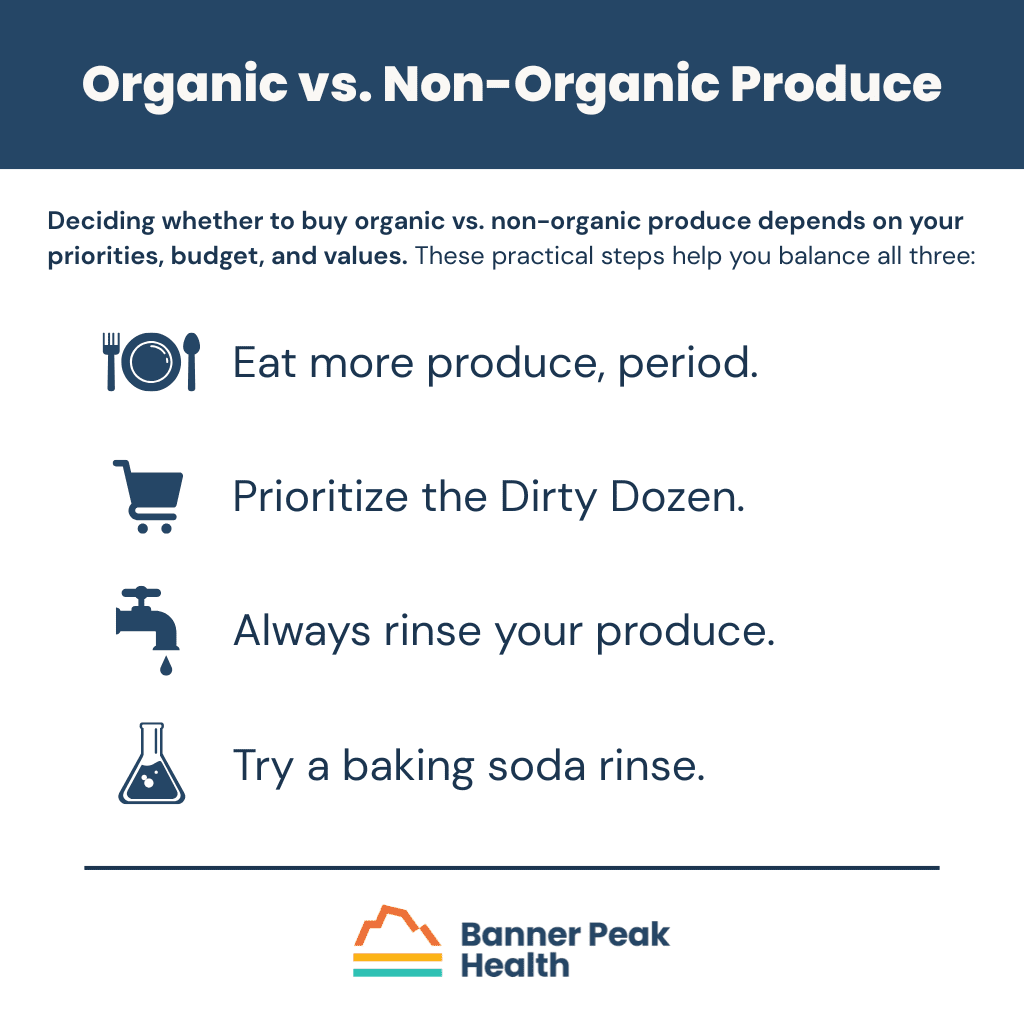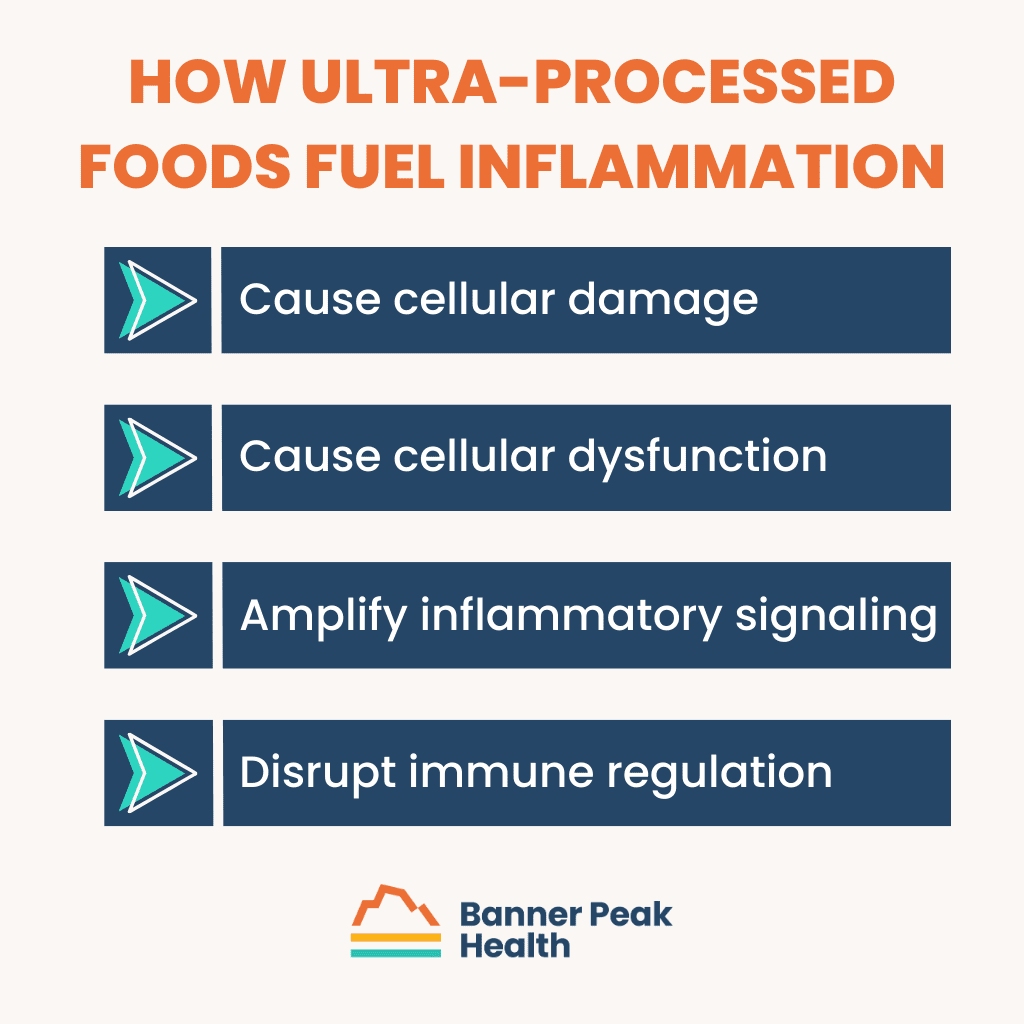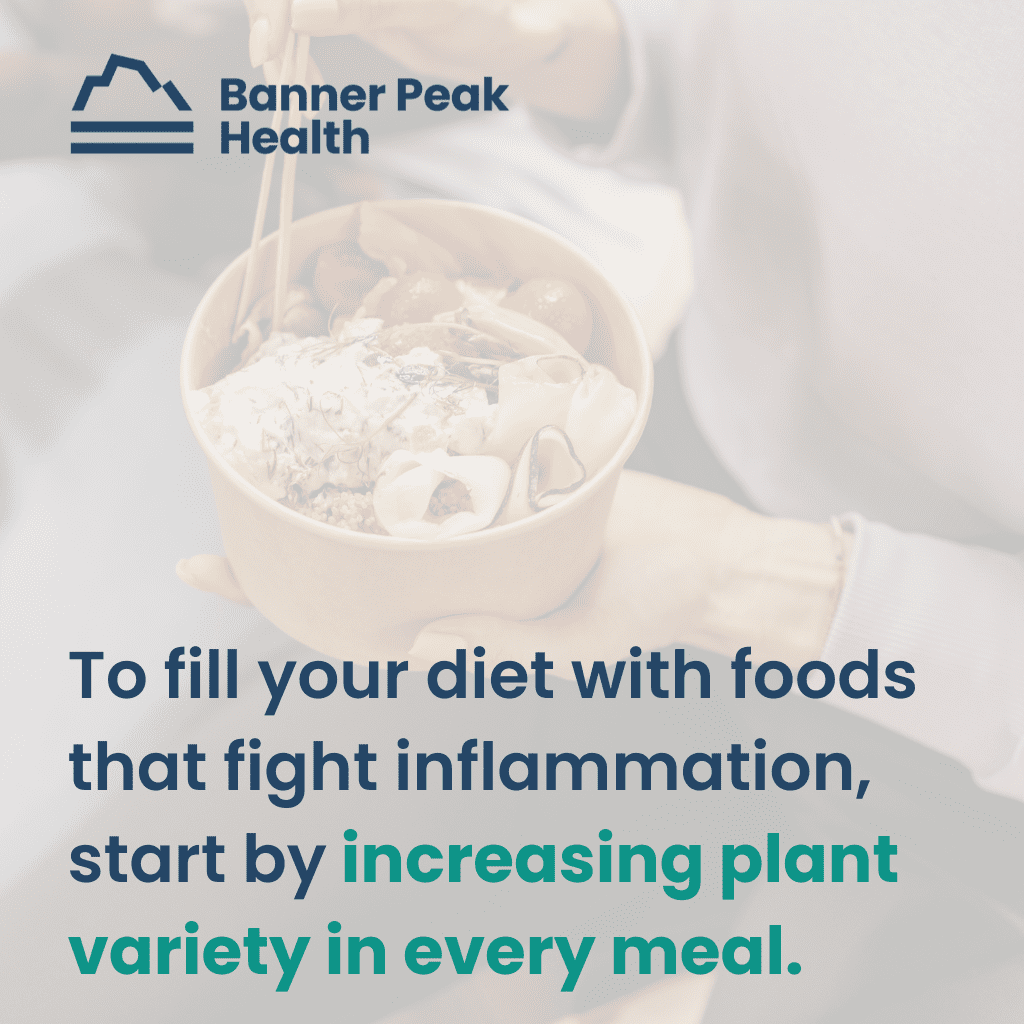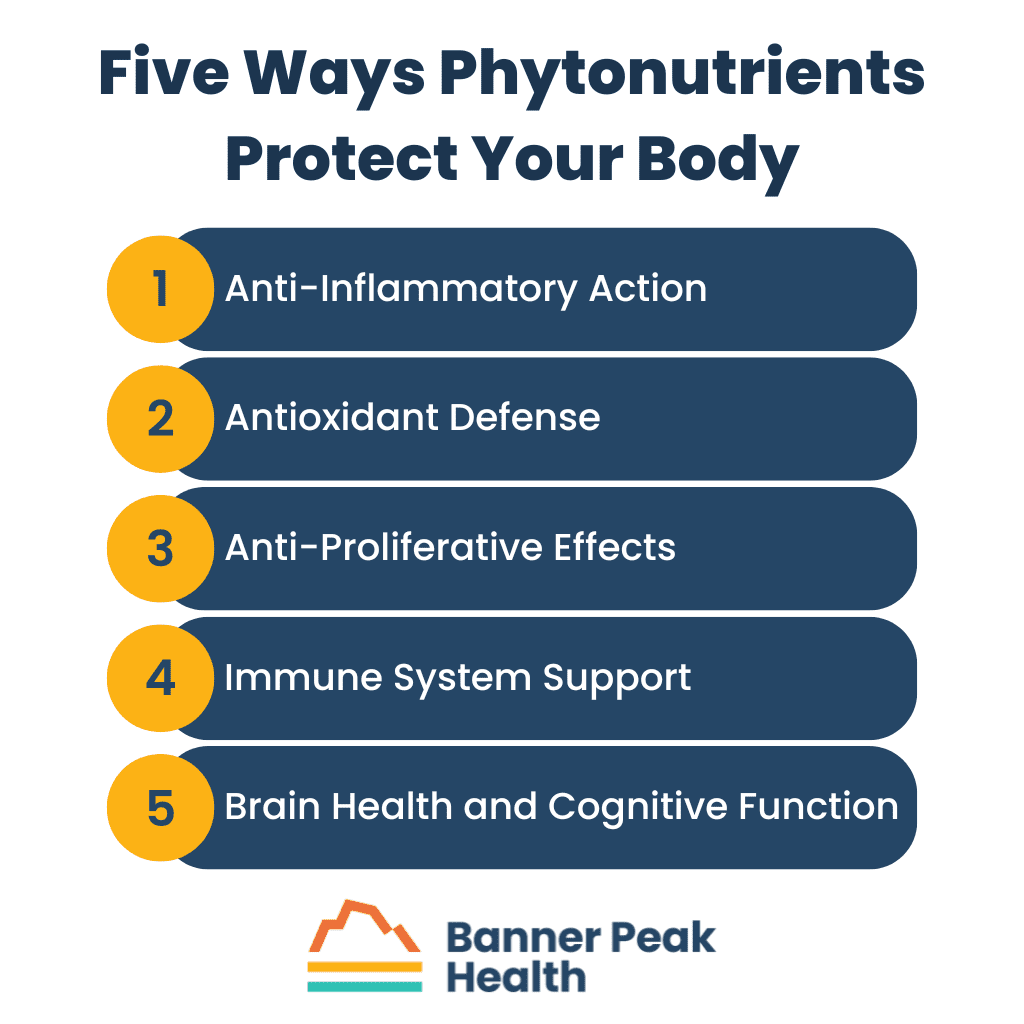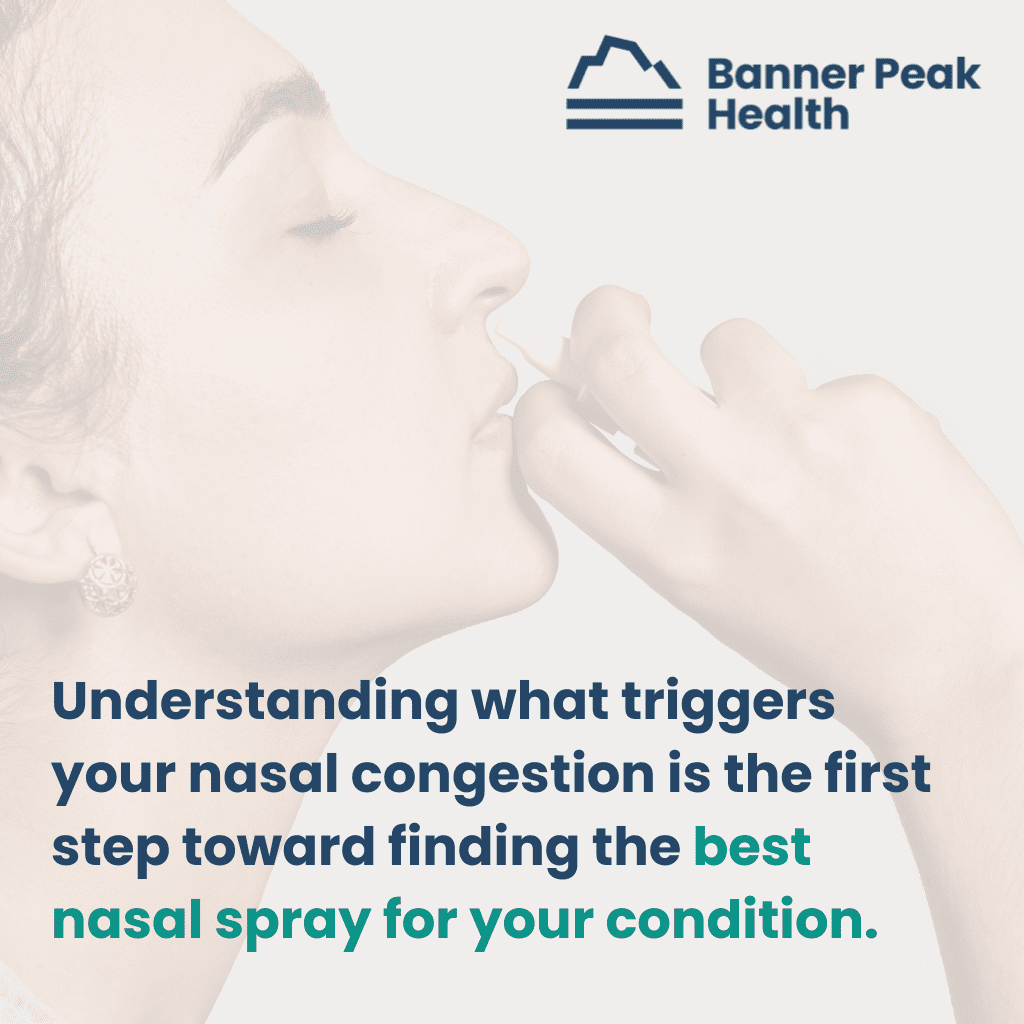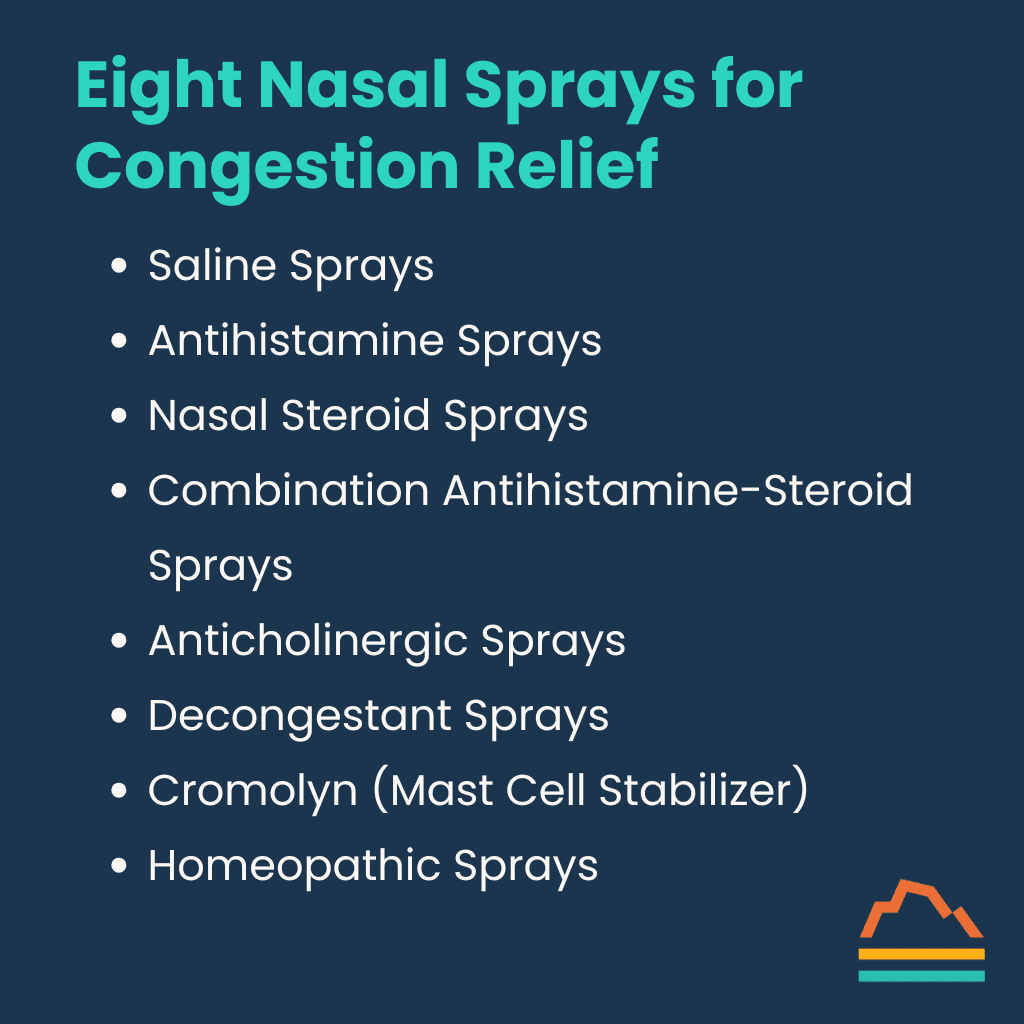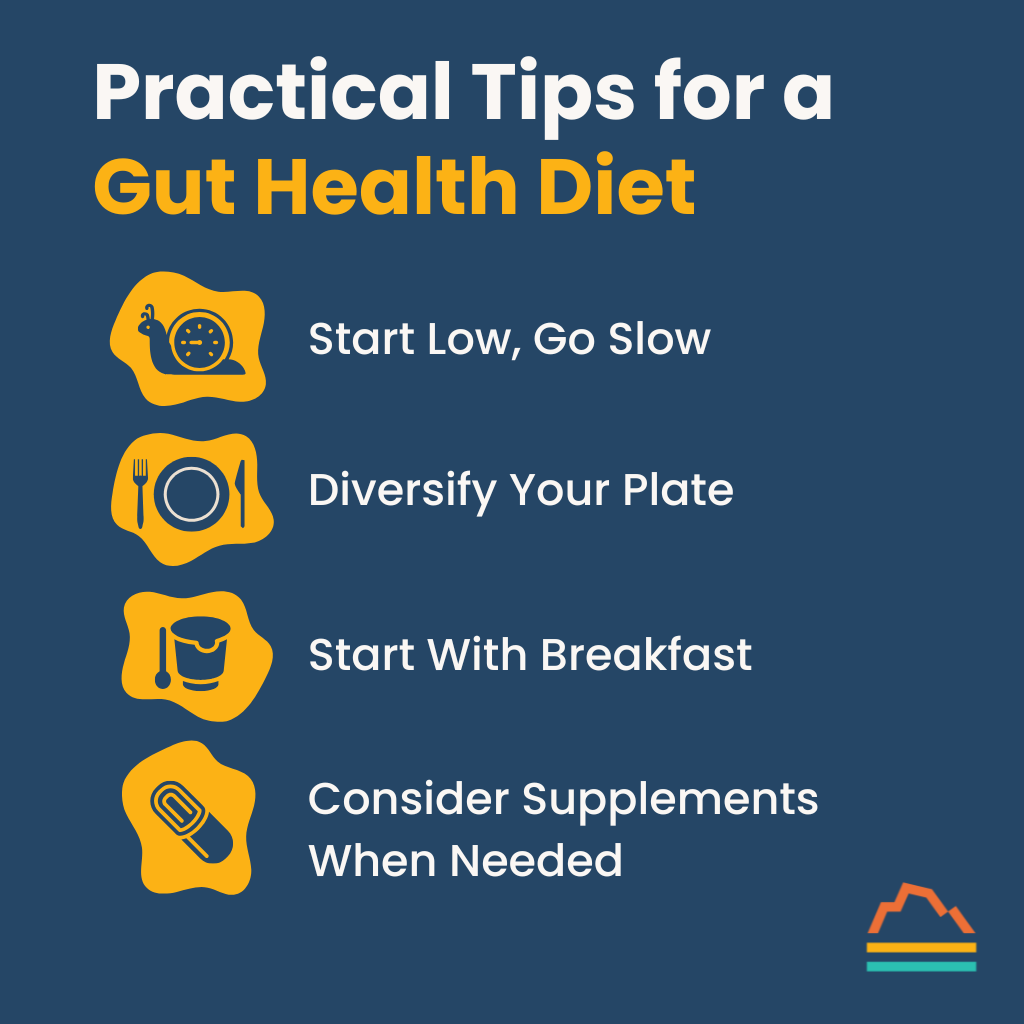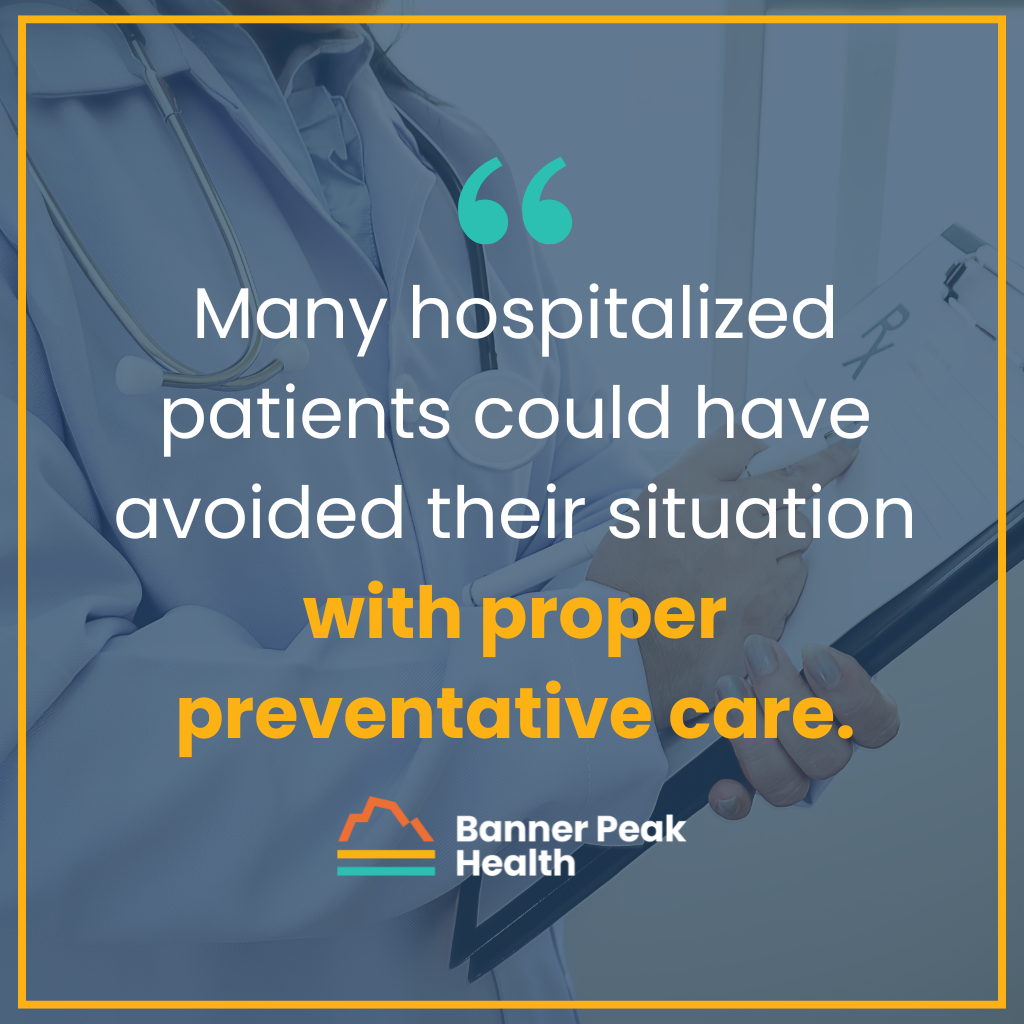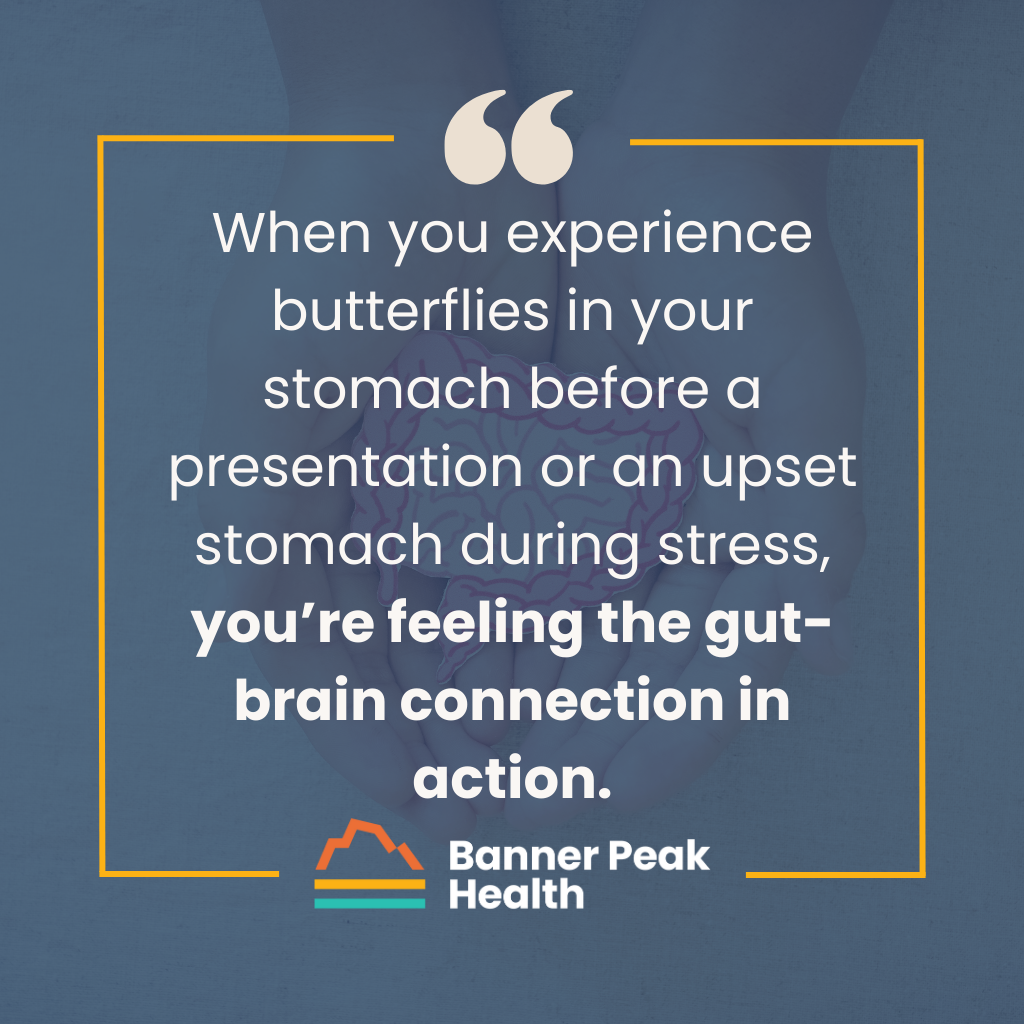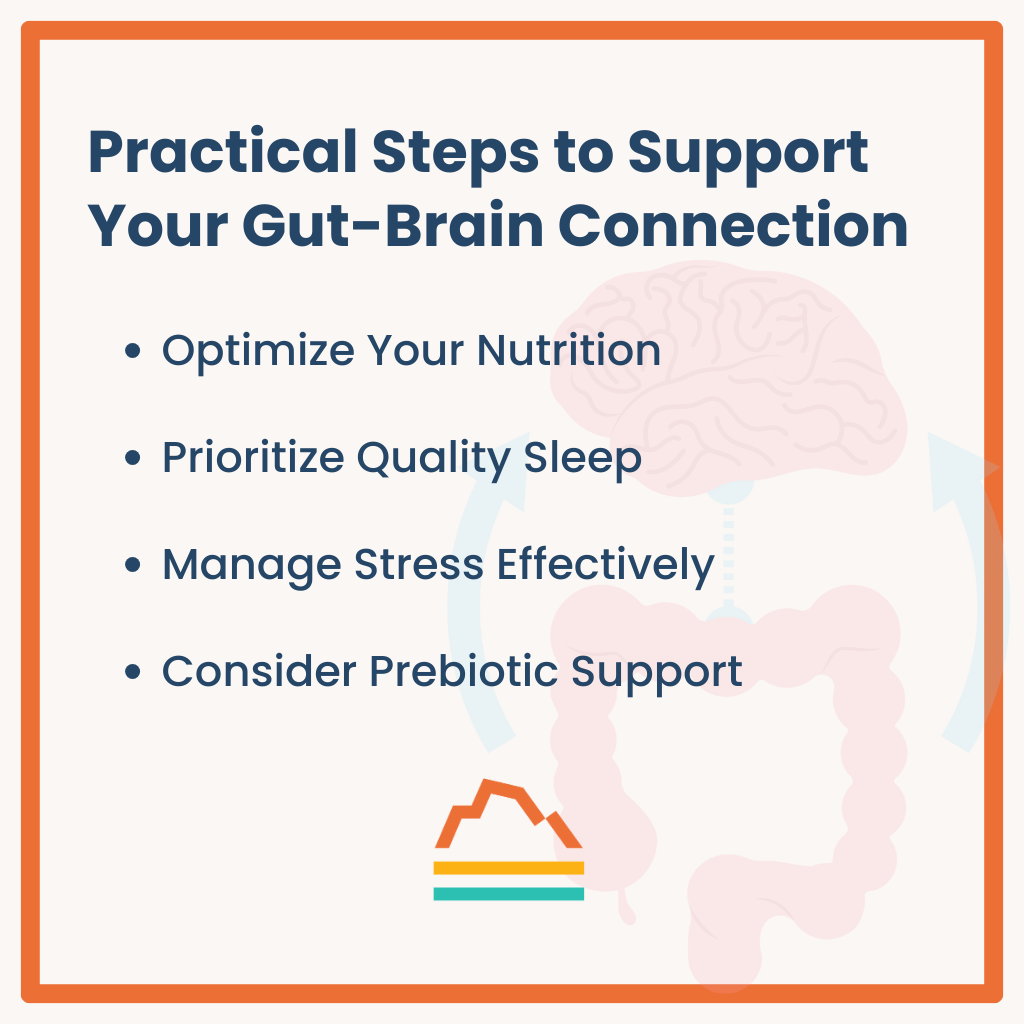Decoding the Labels: The Truth About Organic vs. Non-Organic Foods
You’re standing in the produce aisle, staring at two bundles of spinach. One has a USDA organic label and costs $5.99. The other is $2.99. You reach for the organic option, hesitate, then wonder: Is organic really better?
This question plagues health-conscious shoppers every week. Understanding what separates organic from conventional farming helps you make important decisions about your health, budget, and values.
What Is the Difference Between Organic and Non-Organic?
The difference between organic and non-organic produce starts with how food is grown.
When you see a USDA organic seal on produce, it means that food was produced according to strict federal regulations. These standards prohibit the use of synthetic pesticides, herbicides, fertilizers, genetically modified organisms, sewage sludge, and ionizing radiation, among others.
Organic doesn’t mean zero pesticide use. Organic farmers can use non-synthetic, plant-derived compounds to protect their crops. You’ll find products like neem oil (available over the counter for home gardeners), copper compounds, and sulfur. These natural substances help fight pests and disease.
USDA-certified organic farms must implement environmentally friendly practices, such as crop rotation, composting, and biological pest control. State-dependent organizations conduct farm inspections and testing to verify compliance with these standards.
For a product to carry the organic label, at least 95% of its ingredients must meet organic certification standards. Products labeled “100% organic” contain only certified organic ingredients.
Conventional farming takes the opposite approach, prioritizing yield and efficiency over soil integrity and environmental impact. These farms use synthetic fertilizers, herbicides, insecticides, and fungicides to make their crops resistant to diseases and drought.
Organic vs. Non-Organic Foods: Nutritional Differences
So, does organic produce contain more vitamins and minerals? The research presents a surprising finding: there’s only a minimal difference.
Several studies have shown that certain organic fruits may have higher antioxidant content and lower nitrate levels. When you examine the complete body of research on organic vs. non-organic foods, though, no substantial nutritional differences emerge. You can’t reasonably choose specific products based on superior nutrient density.
The real benefit of organic produce lies elsewhere: reduced exposure to synthetic pesticides.
Conventional produce contains higher levels of pesticide residue, although all levels fall within the Environmental Protection Agency’s safety limits. The EPA regulates the quantities of pesticides to keep consumers safe.
In 2025, a European analysis detected pesticide residue on 85.7% of conventional produce samples versus 40% of organic samples. Multiple meta-analyses confirm that pesticide residue appears about four times more frequently on conventional crops than on organic crops.
Regulations vary by region. More than 80 pesticides banned in the European Union remain approved for use in the United States. European countries tend to implement stricter food safety standards earlier than American agencies, a pattern that extends into pharmaceutical approval.
Health Implications of Pesticide Residue
The EPA maintains that pesticide exposure from conventional produce poses no health risk at typical consumption levels.
Limiting your fruit and vegetable intake because of pesticide concerns is a mistake. Every credible health organization agrees that eating more produce (organic or conventional) provides greater benefits than avoiding it.
The challenge lies in studying pesticide effects on humans.
Most pesticides function as endocrine-disrupting chemicals (EDCs). These compounds mimic or block natural hormones like estrogen, androgens, and thyroid hormones. EDCs can also inhibit enzymes your body uses to produce hormones. The result: potential disruption of both hormone production and your body’s response to hormonal signals.
Researchers have identified several possible health effects.
- Pesticide exposure may impact fertility, though no definitive link exists. If you’re struggling to conceive, reducing your pesticide exposure might be worth considering.
- Some evidence suggests that pesticide exposure during pregnancy may affect fetal neurodevelopment by disrupting hormone signaling.
- Studies have explored potential links to hypothyroidism, though the data remains inconclusive.
- Pesticide exposure may be linked to Parkinson’s disease, according to some studies.
Glyphosate is a herbicide that appears in many conventional crops, particularly oats. You’ll often see organic oats labeled “glyphosate-free.” The World Health Organization classifies glyphosate as a probable human carcinogen based on epidemiological associations with non-Hodgkin’s lymphoma. The U.S. EPA disagrees, stating glyphosate is unlikely to be carcinogenic at real-world exposure levels.
Another pesticide, chlorpyrifos, showed stronger evidence of harm. Epidemiological studies identified adverse neurodevelopmental outcomes in children exposed during pregnancy, with a dose-response relationship. Higher exposure during the first and third trimesters led to a greater likelihood of neurodevelopmental problems.
Chlorpyrifos was banned in the EU in 2020, and in 2021, the EPA effectively banned its use on food and feed crops in the U.S. Two years later, the U.S. Court of Appeals for the Eighth Circuit overturned that ban and sent the matter back to the EPA for further proceedings. As of this writing, the EPA is re-evaluating chlorpyrifos regulations.
Studies examining long-term health associations face a limitation: people who consume organic produce tend to be healthier overall. These individuals make other health-conscious choices, creating unavoidable bias in observational data. Associations between organic food consumption and lower rates of obesity, hypertension, and metabolic disease don’t prove causation.
No randomized controlled trials or meta-analyses have shown long-term health benefits from organic produce. The primary proven advantage is reduced pesticide exposure. The nutritional benefits of consuming produce far outweigh the potential risks associated with pesticides.
Environmental Impact: Beyond Personal Health
Your food choices affect more than your body. Organic and conventional farming have vastly different environmental footprints.
Organic farming yields healthier soil, characterized by increased organic matter and enhanced microbial diversity, which in turn improves long-term soil fertility and water retention. Reduced synthetic pesticide use means more insects, pollinators, and beneficial soil organisms thrive. These elements create a natural, healthy soil environment that produces better crops over time.
Conventional fertilizers and pesticides create another problem: runoff. Heavy rain can wash these chemicals into local water sources, contaminating rivers, lakes, and groundwater. This affects the aquatic organisms and animals that rely on these water sources.
Water treatment facilities remove most contaminants before human consumption, but runoff remains an environmental concern.
Strategic Shopping: The Dirty Dozen and Clean Fifteen
Cost is most families’ biggest barrier to buying organic. You don’t need to purchase all organic produce to reduce your pesticide exposure. Strategic choices make the biggest difference.
The Environmental Working Group (EWG), a nonprofit organization, helps consumers make better decisions. The EWG analyzes data the USDA collects on pesticide residue in produce.
The USDA’s testing methodology is interesting: instead of testing produce straight from the farm, testers wash and prepare samples as consumers would at home, which reflects real-world pesticide exposure. They rinse produce under running water for 15 to 20 seconds. If the item requires peeling, they peel it.
The EWG ranks produce based on four variables:
- Abundance: The percentage of samples with at least one detected pesticide
- Diversity: The average number of different pesticides on a single sample
- Intensity: The concentration of pesticides
- Toxicity: Estimated toxicity based on pesticide concentration
This analysis produces two lists: the Dirty Dozen (highest pesticide residue) and the Clean Fifteen (lowest pesticide residue).
The Dirty Dozen includes produce with higher pesticide levels: spinach, grapes, blackberries, blueberries, and strawberries. Berries consistently rank high for pesticide residue.
The Clean Fifteen features items with thicker peels or protective layers: pineapple, corn, avocado, onions, and watermelon. You remove these protective layers before eating, so you don’t need to invest extra money in organic versions.
Here’s an example: Most grocery stores stock both organic and conventional bananas. Bananas have thick peels that you remove before eating, so you’re probably fine choosing conventional bananas. The price difference is minimal, but the pesticide exposure difference is negligible.
Today’s Takeaways
Deciding whether to buy organic vs. non-organic produce depends on your priorities, budget, and values. These practical steps help you balance all three:
Eat more produce, period. Don’t limit your fruit and vegetable intake over pesticide concerns. The nutritional benefits outweigh potential risks.
Prioritize the Dirty Dozen. If you want to reduce pesticide exposure, focus your organic purchases on the produce ranked highest for pesticide residue. This provides the most value for your money.
Always rinse your produce. The USDA’s pesticide data comes from washed produce. At a minimum, rinse all produce (organic or conventional) for 20 to 30 seconds under running water.
Try a baking soda rinse. Research shows soaking produce in a baking soda solution removes a large percentage of surface pesticides. A 2017 study found that soaking apples for 12 to 15 minutes in baking soda water removed substantial amounts of surface contaminants (though pesticides that penetrate deeper into the peel remained). Peeling produce eliminates more pesticides but also removes beneficial vitamins, minerals, and fiber.
In my house, we buy organic for the items on the Dirty Dozen list. When organic isn’t available, we use a baking soda rinse. The process is simple: mix about half a cup of baking soda with water, soak your produce for 12 to 15 minutes, then rinse thoroughly.
We don’t measure precisely or create exact percentages. The goal is practical protection, not laboratory precision.
So, is organic really better? The answer depends on what “better” means to you. Organic produce exposes you to fewer synthetic pesticides and supports more sustainable farming practices. It doesn’t provide dramatically superior nutrition. Whether that trade-off justifies the higher cost is up to you.
Make informed choices based on your circumstances, and remember that any produce is better than no produce.
Foods That Fight Inflammation: Your Defense Against Silent Damage
Most people think inflammation means a swollen ankle or arthritis pain. But chronic, low-grade inflammation damages your body silently, with no visible symptoms and no obvious warning signs.
I can measure inflammation with blood tests like C-reactive protein (CRP) and erythrocyte sedimentation rate (ESR). When someone has rheumatoid arthritis with swollen joints, these markers spike. But the standard American diet creates pro-inflammatory cascades that these tests won’t necessarily detect.
We’re not checking tumor necrosis factor alpha (TNF-α) or interleukin-6 (IL-6) levels in routine practice. Yet we know that processed foods, saturated fats, and sugar increase the production of these inflammatory molecules. They damage your body slowly, contributing to cardiovascular disease and cancer over decades.
Even without clinical measurements, these processes happen beneath the surface. If you want to maximize lifespan and healthspan, address inflammation through anti-inflammatory foods.
How Modern Diets Create Inflammation
The standard American diet, high in saturated fat and sugar but low in fiber, triggers inflammation through several pathways.
Within two hours of eating a high-fat, high-sugar meal, research shows increased IL-6 levels in the blood. These levels drop afterward, but repeated exposure creates chronic inflammation.
Artificial sweeteners and excess sugar alter how immune cells function. They increase pro-inflammatory cytokines like IL-6 and TNF-α. These foods also change your gut microbiome, increasing pro-inflammatory bacteria while decreasing beneficial species.
When harmful bacteria proliferate, they impair gut barrier function. Substances that belong in your gut leak into your bloodstream, triggering inflammatory cascades from white blood cells.
Ultra-processed foods create oxidative stress, generating reactive oxygen species (free radicals). These cause cellular damage and dysfunction, amplifying inflammatory signaling and disrupting immune regulation.
Foods for Anti-Inflammation
The solution involves ingesting foods for anti-inflammation, namely by increasing plant diversity in your diet.
Plants contain phytonutrients that improve gut biodiversity and increase short-chain fatty acid production. Both are necessary for controlling inflammation.
The Power of Color
Anthocyanins, water-soluble flavonoid pigments, give plants their vibrant colors and have powerful anti-inflammatory effects. These compounds make blueberries blue, purple grapes purple, and red peppers red.
Berries contain the highest anthocyanin content among commonly consumed foods. But any brightly pigmented produce delivers these benefits.
Compare a sweet potato to a white potato. The bright orange color signals higher anthocyanin content and greater anti-inflammatory potential.
Dark-colored beans surprised me during my research. Black beans and red beans contain a ton of anthocyanins. The darker the bean, the more anti-inflammatory compounds it contains. Purple cabbage and purple sweet potatoes provide an extra boost of these protective pigments.
When you see bright colors in vegetables and fruits, you’re seeing anthocyanins. Eat the rainbow. It’s that simple.
Turmeric: The Most Studied Anti-Inflammatory Food
Turmeric contains curcumin, a polyphenol compound used in traditional Chinese medicine and Ayurvedic medicine for centuries. It’s probably the most well-studied supplement for reducing inflammation.
Add turmeric to eggs, rice, chicken dishes, or soup. Indian cuisine uses it extensively. However, adding turmeric to food doesn’t match the doses used in clinical studies.
A 2023 meta-analysis examined 66 randomized controlled trials on turmeric and curcumin. Across the board, supplementation decreased CRP, TNF-α, and IL-6 compared to placebo.
These studies used 500–1,000 milligrams of curcumin daily. If you struggle with chronic joint pain despite dietary changes, consider supplementation. Curcumin has very low bioavailability on its own, so look for formulations designed for better absorption.
Thorne makes a quality product using Meriva, a curcumin formulation that’s been widely studied and demonstrated to improve bioavailability. Always consult your doctor before starting any supplement regimen.
Maximizing Absorption
Piperine, a phytochemical in black pepper, acts as a bio-enhancer for curcumin. When you add turmeric to your dishes, include black pepper. The combination boosts bioavailability.
This won’t match the 1,000 milligrams used in clinical studies, but it helps your body absorb more of the curcumin you do consume.
Implementing Foods That Fight Inflammation
To fill your diet with foods that fight inflammation, start by increasing plant variety in every meal. Each plant provides different anti-inflammatory compounds.
For instance, don’t just eat spinach. Add arugula, kale, and other greens. Each features a unique phytonutrient profile.
Focus on deeply colored produce. Choose purple cabbage over green, sweet potatoes over white, and black beans over pinto. The pigments themselves are anti-inflammatory compounds.
Add turmeric to your cooking regularly. Mix it with black pepper for better absorption. If joint pain persists despite dietary changes, discuss curcumin supplementation with your physician.
Today’s Takeaways
Chronic inflammation damages your body even when you can’t see or feel it. The standard American diet promotes inflammatory cascades through processed foods, sugar, and a lack of plant diversity.
Combat inflammation by eating anti-inflammatory foods: colorful produce rich in anthocyanins. Add turmeric with black pepper to your meals. Consider high-quality curcumin supplements like Thorne’s Meriva formulation if you struggle with persistent joint pain.
At Banner Peak Health, we recognize that inflammation underlies many chronic diseases. Making strategic dietary choices today protects your health for decades to come.
The Benefits of Phytonutrients: What Your Nutrition Facts Label Doesn’t Tell You
I’ve spent my career encouraging patients to read the nutrition facts labels on their food, but those labels only tell part of the story.
The most powerful compounds in your broccoli, berries, and Brussels sprouts never appear on any nutrition facts label. These invisible nutrients, called phytonutrients, determine whether your diet protects you from chronic disease.
Phytonutrients: The Hidden Nutrition Gap
Phytonutrients are bioactive compounds found exclusively in plants. Unlike vitamins, you won’t die without them, but there’s a massive difference between not dying and thriving.
These compounds include polyphenols, flavonoids, carotenoids, and phytosterols. If you don’t consume a wide variety of plants, you miss out on nutrients that reduce your risk of cardiovascular disease, diabetes, obesity, and cancer.
How Plants Use Phytonutrients to Protect Themselves (and You)
Phytonutrients are a plant’s defense system. They’re responsible for the colors, flavors, and aromas in fruits, vegetables, whole grains, nuts, and seeds.
These compounds also act as natural pesticides, inhibiting the growth of bacteria and fungi. They help plants cope with drought, extreme temperatures, and UV radiation. When plants face stress, they produce more of these protective compounds.
When humans consume these plant defense mechanisms, they protect us, too. The same compounds that shield plants from UV damage help prevent oxidative stress in our cells, and the natural pesticides that protect plants from pathogens boost our immune system.
Plants can’t run from danger. They’ve developed sophisticated chemical defenses instead. When you eat those plants, you inherit their phytonutrients: their protection.
Five Ways Phytonutrients Protect Your Body
Anti-Inflammatory Action
Phytonutrients, particularly polyphenols, suppress the release of pro-inflammatory cytokines like tumor necrosis factor alpha (TNF-α) and interleukin-6 (IL-6). They simultaneously increase anti-inflammatory cytokines like IL-10.
This dual action reduces chronic inflammation at the cellular level.
Antioxidant Defense
Free radicals form naturally as cells age, but environmental factors like smoking, pollution, and UV radiation accelerate their production.
Phytonutrients neutralize these free radicals before they damage your cells. This antioxidant activity protects your DNA, proteins, and cell membranes from oxidative damage.
Anti-Proliferative Effects
Sulforaphane, found exclusively in cruciferous vegetables, promotes apoptosis (programmed cell death) in cancer cells. It arrests cell cycle development, preventing the rapid division that characterizes cancer growth.
Sulforaphane even inhibits angiogenesis, the process tumors use to create new blood vessels for their growth.
Immune System Support
Phytonutrients increase the function of various white blood cells: B cells, T cells, and macrophages, the cells that eat pathogens.
Certain phytonutrients increase our body’s ability to recognize threats and boost macrophage activity, causing them to consume more invaders.
Brain Health and Cognitive Function
Phytonutrients increase brain-derived neurotrophic factor (BDNF) and nerve growth factor (NGF). Both are necessary for synaptic plasticity and neuronal survival, which link to improved learning, memory, and overall cognitive performance.
Beyond “Eat the Rainbow”: Advanced Strategies for Phytonutrient Consumption
Eating colorful foods increases phytonutrient intake. Anthocyanins give foods their vibrant colors, and color diversity equals phytonutrient diversity. But there are more sophisticated approaches.
Preparation Matters
Raw vegetables contain the highest phytonutrient levels. Heat degrades these compounds: higher temperatures and longer cooking times cause more damage.
Steam or lightly sauté your vegetables. Aim for al dente texture: cooked but still firm. If your vegetables are super soft, you’ve reduced their nutritional content.
The Garlic and Onion Hack
When you cut garlic or onions, you trigger the enzyme alliinase. This enzyme creates allicin, which provides many health benefits.
Chop your garlic and onions first, then let them sit for 10–15 minutes before cooking. This waiting period allows the enzyme to produce maximum allicin, increasing antioxidant activity, anti-inflammatory effects, and anti-tumor properties.
Sprouting: The 100X Multiplier
I sprout seeds at home with my kids. It’s simple: put seeds in a jar, add water, and wait. But the science behind it amazes me.
When seeds sprout, their enzymatic activity explodes. They’re trying to grow into plants, which requires massive biochemical changes. These enzymatic processes create higher nutrient levels.
Broccoli is the best example. Mature broccoli contains high sulforaphane levels, but broccoli sprouts contain 10–100 times more sulforaphane than mature broccoli. After just five days of sprouting, you get roughly 10-fold higher content of this anti-carcinogenic compound.
You rarely find sprouts in stores because of shelf stability issues, but making them at home takes minimal effort. Get a sprouting kit (basically mason jars with mesh lids), add seeds and water, rinse daily, and harvest fresh sprouts in two to five days.
Practical Implementation
Don’t reach for supplements. If you’re swallowing a pill to replace a healthy diet, you’re missing the point.
Even if turmeric supplements demonstrate anti-inflammatory effects, taking them while eating processed foods and artificial sweeteners defeats the purpose.
Focus on getting phytonutrients from whole foods first. Add diversity to every meal:
- Get creative with spices: South and East Asian cuisines excel at this. Use garlic, turmeric, cinnamon, ginger, and other spices instead of relying on salt.
- Eat seeds and nuts daily. Add them to your yogurt, blend them in smoothies, mix them into pancake batter, or eat them as snacks.
- Use multiple types of greens: don’t just eat spinach. Add arugula, kale, and other varieties. Each provides different phytonutrient profiles.
Today’s Takeaways
You can’t overemphasize the importance of phytonutrients in your diet. These compounds don’t exist in most people’s nutritional framework, yet they determine whether you merely survive or actually thrive.
Start simple: Increase the quantity and diversity of plants in your diet. Prepare them properly to preserve their phytonutrient content. Try sprouting for a dramatic increase in nutrient density.
Those invisible compounds on your food label might be the most important nutrients you consume.
Best Nasal Sprays for Congestion: A Doctor’s Complete Guide
Many people turn to nasal sprays for quick relief from stuffed noses, but with so many options available, choosing the right nasal spray for congestion can be overwhelming.
Before reaching for any particular nasal spray for congestion, it’s important to understand what’s happening inside your nose.
Understanding Nasal Congestion
When patients suffer from congestion, they’re often experiencing one or both of the following issues:
- Runny nose: Excessive mucus production
- Stuffy nose: Inflammation, making it difficult to pass air through the nasal passages
These symptoms stem from different causes, requiring different treatments. The best nasal spray for congestion in one situation might be ineffective in another.
Common Causes of Nasal Congestion
Understanding what triggers your nasal congestion is the first step toward finding the best nasal spray for your condition. Here are the most common causes I see in my practice:
Allergic Rhinitis (Hay Fever)
Your immune system overreacts to allergens, causing inflammation and increased mucus production.
Nonallergic Rhinitis
Nonallergic triggers, such as weather changes, cause congestion and/or a runny nose.
Occupational and Environmental Irritants
Cold air, cigarette smoke, air pollution, wildfire smoke, perfumes, and detergents can all trigger nasal congestion.
Medications
Many common medications cause nasal congestion as a side effect:
- Antidepressants
- Erectile dysfunction medications
- Blood pressure medications (particularly beta blockers and alpha blockers)
Chronic Alcohol Use
Regular alcohol consumption can trigger chronic nasal congestion and a runny nose, though the mechanisms aren’t fully understood as of this writing.
Nine Types of Nasal Sprays for Congestion
Now that we understand nasal congestion’s causes, let’s review different types of nasal sprays for congestion:
1. Irrigation
This isn’t technically a spray, but it’s important to include. Neti pots and similar devices flush out irritants with saline solution.
Important Safety Note: Always use distilled or properly boiled water and clean your device thoroughly to prevent introducing harmful pathogens.
2. Saline Sprays
These sprays moisturize the nasal passages and wash away allergens and irritants that cause inflammation. They’re safe for long-term use.
3. Antihistamine Sprays
Products like Astepro target H1 histamine receptors, blocking the histamine that immune cells release in response to allergens.
How they work: These sprays prevent histamine from binding to receptors, decreasing blood vessel dilation and reducing stimulation of sensory nerves that cause itching and sneezing.
Results appear within 15–30 minutes.
4. Nasal Steroid Sprays
Common options include Flonase (fluticasone), Nasacort (triamcinolone), and Nasonex (mometasone).
How they work: These sprays reduce inflammation by decreasing immune cell activity. When immune cells like eosinophils, neutrophils, and macrophages become less active, they produce fewer inflammatory mediators like histamine and cytokines.
Unlike antihistamines, steroid sprays take time to work — usually one to two weeks of consistent use.
5. Combination Antihistamine-Steroid Sprays
Prescription-only options like Dymista combine fluticasone (steroid) and azelastine (antihistamine) for dual action.
6. Anticholinergic Sprays
Products like ipratropium (Atrovent) target muscarinic receptors.
How they work: These sprays decrease glandular secretions, reducing mucus production and rhinorrhea (runny nose).
They’re particularly effective for patients with chronic runny nose without systemic allergy symptoms.
7. Decongestant Sprays
The most immediately effective (and potentially problematic) option. Brands include Afrin, Vicks Sinex, Sudafed OM, and Xlear, all containing oxymetazoline.
How they work: These target alpha-adrenergic receptors, causing vasoconstriction that reduces blood flow to the nasal mucosa. This decreases edema and mucus production and improves airway patency.
Critical warning: Never use for more than three days. Longer use causes rebound congestion (rhinitis medicamentosa), meaning your symptoms worsen with continued use.
8. Cromolyn (Mast Cell Stabilizer)
Products like NasalCrom stabilize mast cells, reducing their release of inflammatory mediators.
These products are most effective when used preventatively before allergy season begins.
9. Homeopathic Sprays
Products like Zicam claim to work through various mechanisms, but limited research supports their effectiveness.
Potential Side Effects of the Best Nasal Spray for Congestion
Even the best nasal sprays for congestion come with potential side effects:
All Nasal Sprays
Any nasal spray can cause irritation regardless of type.
Nasal Steroids
- Excessive dryness leading to nosebleeds (epistaxis)
- Impaired healing of nasal ulcerations
- Rarely, oral candidiasis (yeast infection)
- Possible association with glaucoma (low risk)
Anticholinergics
- Nasal and throat dryness
- Potential nasal bleeding
Decongestants
- Rebound congestion after three to five days of use
- Increasing dependence with continued use
My Recommendations
For most nasal congestion issues, I recommend a two-step approach:
- Mechanical removal of irritants. Start with saline irrigation or sprays to physically remove allergens and irritants. This reduces the burden of triggers causing your symptoms.
- Anti-inflammatory treatment. Follow with a nasal steroid spray to reduce inflammation. These can be used long-term if necessary.
For seasonal allergies, begin using nasal steroids two to three weeks before your typical allergy season starts.
For severe symptoms, you might temporarily add a decongestant spray (for no more than three days) while waiting for nasal steroids to reach full effectiveness.
For patients primarily experiencing a runny nose without other allergy symptoms, anticholinergic sprays often provide excellent relief.
For pregnant women or women trying to conceive who prefer to avoid steroids, cromolyn may be a good alternative.
Today’s Takeaways
The best nasal spray for congestion depends on your symptoms, their cause, and how long you’ve been experiencing them.
At Banner Peak Health, we don’t practice population medicine. We take time to understand each patient’s unique situation and recommend the right combination of treatments for their specific needs.
If nasal congestion is disrupting your life, let’s work together to find the right solution. We’ve got the time to research these options thoroughly and create a personalized approach for you.
The Ultimate Gut Health Diet: How to Optimize Your Microbiome
To achieve optimal health, we must pay attention to the entire ecosystem inside our bodies: not just our own cells, but the trillions of microorganisms that call our gut home.
Most people know what fiber is and recognize that it exists in food, but they don’t appreciate its role in health. While many Americans obsess over protein content, they overlook fiber as a crucial component of a diet for gut health.
The Foundation of a Gut Health Diet: Understanding Fiber
When discussing an effective gut health diet, we must start with fiber, the cornerstone of digestive wellness. Fiber falls into two categories: soluble and insoluble.
Soluble Fiber
Soluble fiber dissolves in water, creating a viscous, gel-like substance. When consumed, it expands in your stomach and:
- Increases fullness
- Slows gastric emptying
- Helps maintain weight
- Decreases glucose absorption, reducing blood sugar spikes
Popular weight loss medications tout these same effects. Thanks to fiber, you can achieve similar benefits through dietary changes, no prescription needed.
Soluble fiber plays a key role in lowering cholesterol and is an important component of any cholesterol management plan. It binds bile acids in the gut, which reduces the reabsorption of cholesterol. This effect is dose-dependent. The more soluble fiber consumed, the greater the reduction in LDL cholesterol.
Find soluble fiber in the soft, fleshy parts of fruits and vegetables, beans, barley, and oat bran.
Insoluble Fiber
Insoluble fiber doesn’t dissolve in water. It passes through your digestive system largely intact, increasing stool bulk and promoting movement through your digestive tract.
Most plant foods contain both types of fiber. Consider an apple: the flesh contains soluble fiber, while the skin provides insoluble fiber.
The Gut Health Diet Triad: Pre, Pro, and Post
A diet for gut health contains three components:
- Prebiotics (primarily fiber): Fuel for your gut bacteria
- Probiotics: Beneficial living bacteria introduced through food or supplements
- Postbiotics: Your gut bacteria produce these beneficial compounds, including short-chain fatty acids
Think of this like a bee colony: The quality and variety of pollen (prebiotics) determine how many and what kind of bees (probiotics) thrive, which impacts the quality and quantity of honey (postbiotics) produced.
How Much Fiber Do We Need?
The standard American diet includes only 10–15 grams of fiber daily, a fraction of what our bodies need.
For optimal gut health, aim for 30–40 grams daily. Some experts recommend up to 50 grams.
The Power of Plants in a Diet for Gut Health
The foundation of a gut health diet is simple: eat more plants.
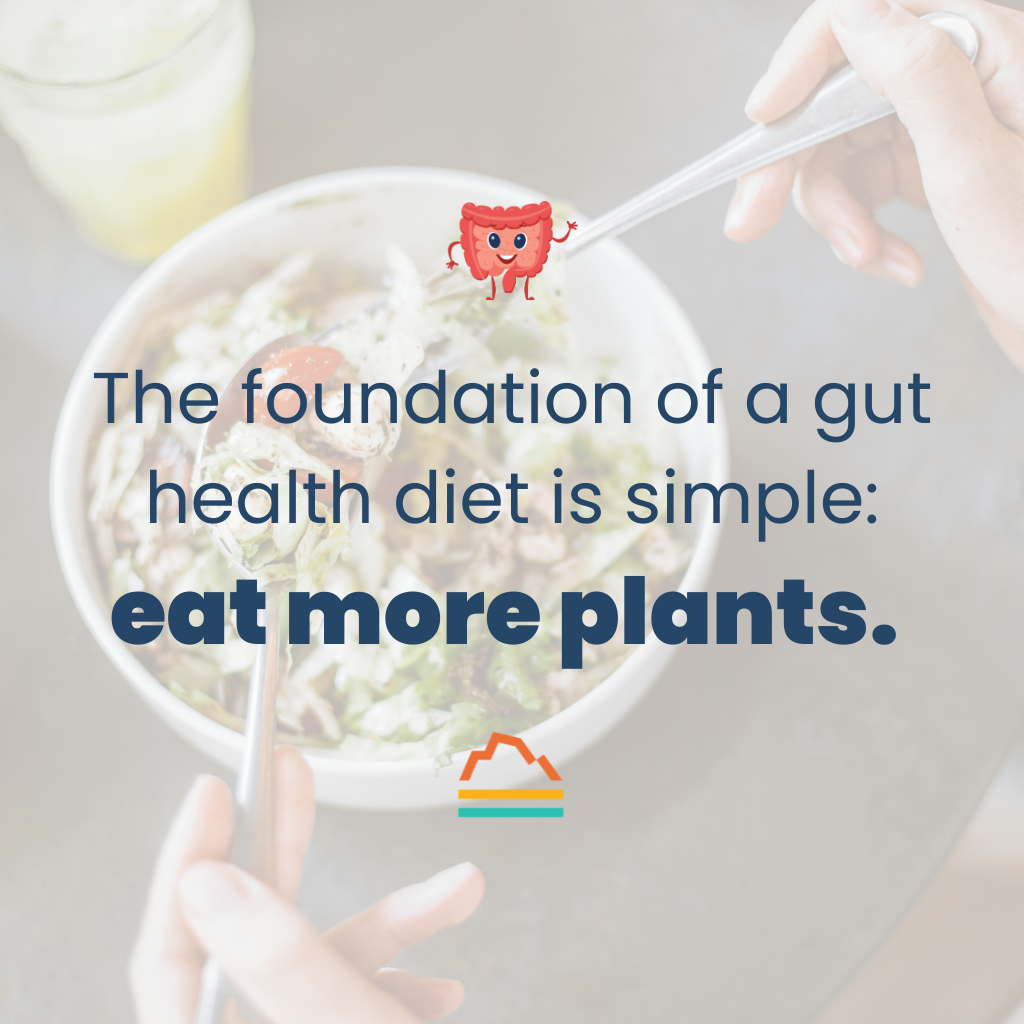
I’m not advocating for veganism, as animal proteins are integral to a healthy diet. Just incorporate more plant-based foods from these categories:
- Vegetables: All varieties
- Legumes: Beans, lentils, chickpeas, soybeans
- Fruits: Fresh, seasonal options
- Nuts and seeds: Unsalted, unprocessed varieties
- Whole grains: Brown rice, quinoa, oats, sprouted breads
Practical Tips for a Gut Health Diet
1. Start Low, Go Slow
Don’t change your diet too quickly. Your gut microbiome needs time to adapt.
If you’ve tried beans before and felt sick, consider how you introduced them. Starting with a spoonful and gradually increasing allows your gut bacteria time to adjust. Over time, the populations capable of digesting these foods grow, strengthening your digestive capacity.
2. Diversify Your Plate
At Restaurants
Don’t hesitate to request additions to your meal. Ask for extra vegetables on your salad or sandwich. Most restaurants accommodate health-conscious requests.
At Home
Make each meal an opportunity to support your gut health. For example, switch up a basic salad by:
- Using multiple leafy green varieties
- Adding legumes like lentils or chickpeas
- Incorporating seeds for extra fiber
For sandwiches, upgrade your approach:
- Choose sprouted bread (like Ezekiel) with three grams of fiber and five grams of protein per slice
- Use bean spreads or hummus instead of processed condiments
- Add multiple vegetables for color and variety
3. Start With Breakfast
Breakfast is an opportunity to start your day with a fiber-rich meal. Follow this approach:
- Begin with plain, unsweetened Greek yogurt or kefir
- Add chia seeds, flax seeds, and hemp hearts
- Include crushed walnuts for healthy fats
- Top with fresh berries
This single meal is full of fiber, protein, healthy fats, and probiotics.
Apply the same principle to oatmeal or smoothies, adding multiple plant-based ingredients to maximize nutritional value.
4. Consider Supplements When Needed
Food works best as your primary fiber source, but supplements can help, especially for constipation management.
Psyllium husk is particularly effective. Unlike Metamucil, which contains artificial dyes and sweeteners, choose pure psyllium husk powder. Yerba Prima makes an excellent version.
Here are some tips for using psyllium husk:
- Stir the powder vigorously and quickly to prevent clumping
- Mix it with water and a splash of orange juice for a better taste
- Start with a small amount and gradually increase your intake
- Choose the powder form over capsules for greater effectiveness
Beyond Fiber: The Gut-Body Connection
A gut health diet improves more than just digestion. The short-chain fatty acids your gut bacteria produce support whole-body wellness.
Short-chain fatty acids create healthy enterocytes (the cells that line your gut) that enhance gut barrier integrity. This reduces the movement of harmful compounds from your gut into your bloodstream, decreasing inflammation.
Today’s Takeaways
Your gut microbiome is an essential organ system that requires proper nourishment. When considering your diet, remember that your food nourishes both your body and the trillions of beneficial bacteria supporting your health.
By gradually increasing fiber intake, diversifying your plant consumption, and making strategic dietary choices, you can improve your gut health and reduce inflammation throughout your body.
At Banner Peak Health, we believe in a preventative, nutrition-focused approach to wellness. We know that a proper gut health diet doesn’t require extreme measures; just thoughtful, consistent choices that nourish both you and your microbial partners.
Why I Left Hospital Medicine for Concierge Care
After completing my medical training, I had a clear vision: to connect with patients on a personal level and develop lasting relationships based on trust. I wanted to practice medicine the way I was trained to.
Looking at the healthcare landscape as a newly minted internal medicine doctor, I faced a choice: I could work at a hospital, or I could enter traditional primary care.
The latter system contradicted my values. The model pushed doctors to see as many patients as possible in 15-minute visits — complex health issues squeezed into inadequate time slots.
This approach felt like a disservice to both my patients and myself.
Building Clinical Expertise
I went with the first option. I spent five years as a hospitalist at Northwestern, caring for 15–20 patients a day with complex and often critical conditions.
Those years proved invaluable. I honed my clinical skills, gained extensive experience, and worked alongside specialists in a multidisciplinary environment. I valued the collaborative approach and the immediate impact of caring for critically ill patients.
I noticed that many hospitalized patients could have avoided their situation with proper preventative care. If I had met them five or ten years earlier, perhaps they wouldn’t be in the hospital at all.
During this time, I cared for several patients who belonged to concierge practices. Through them, I met physicians practicing concierge medicine, which aligned with my training and beliefs.
These connections became the bridge to my current practice.
The Move to Banner Peak Health
Both personal and professional factors drove my transition to Banner Peak Health.
On the personal side, after my third son was born, my wife and I reassessed our priorities. We wanted to be closer to our extended families, and we wanted to move to an area where we could more easily participate in activities we love — hiking, biking, and camping — and share those activities with our boys.
Professionally, I was struck by Banner Peak Health’s embodiment of what Dr. Rotman and I call “concierge medicine 2.0.” Traditional concierge medicine (version 1.0) offers excellent medical care, strong community connections, and superior service.
Banner Peak delivers all that, plus the integration of cutting-edge innovations and technologies. It’s a collaborative environment where physicians eagerly learn from each other. We evaluate new technologies, test them ourselves, and help patients implement beneficial solutions.
Another distinction: patient panel size. At my previous practice, I had as many as 440 patients. At Banner Peak, my maximum will be 250. This smaller panel allows me to dive deeper with each patient, discussing nutrition, microbiome, exercise optimization, and more.
The Four Pillars in Real Life
I emphasize four pillars of wellness with my patients: nutrition, exercise, sleep, and stress management. I don’t claim to be perfect in any of these areas, especially after moving across the country with three young children!
Sleep, for instance, is a variable equation with a nine-month-old. Nutrition remains more consistent because I can control what I eat regardless of time constraints.
And when it comes to exercise, I recommend “exercise snacks” for busy patients with young families — short bursts of activity throughout the day. This might mean doing lunges while carrying your toddler, sets of pushups or pullups before a shower, or fitting in wall sits during phone calls. I also try to ride my bike to work most days of the week.
The goal isn’t perfection but consistent effort toward improvement.
Technology as a Health Partner
I’m particularly excited about continuous glucose monitors (CGMs) like Stelo. These devices — once available only by prescription for diabetics — now provide valuable feedback to anyone interested in optimizing their metabolism.
CGMs create powerful input-output feedback loops. Patients see what four slices of pizza do to their blood sugar in real time. Next time, they might choose two slices instead, or they might take a walk after eating to mitigate the spike.
This immediate feedback helps patients understand how their bodies respond to different inputs and outputs, creating accountability that drives positive change.
The Future of Concierge Medicine 2.0
Dedicated time with a physician can fundamentally change a patient’s day-to-day experience. I find profound professional satisfaction in that. Knowing I’ve helped someone make lasting changes that’ll improve their health for years or decades is one of medicine’s greatest rewards.
Beyond individual care, I envision creating a community of like-minded people engaged in health-promoting behaviors. Banner Peak Health builds health partnerships that change lives through personalized preventative care and community support.
When it comes to Banner Peak Health’s future, I envision more than individual doctor-patient relationships. I see a community where like-minded people support each other’s health journeys. This community approach amplifies the benefits of personalized care, as patients connect, share experiences, and motivate each other toward better health outcomes.
I’m excited to be a part of it.

The Gut-Brain Connection: A Concierge Medicine Approach to Digestive and Mental Wellness
For decades, we viewed the gut and brain as separate systems with distinct functions, but recent research reveals an intricate gut-brain connection.
This connection influences everything from our mood to our immune function. But how does the nervous system work with the digestive system exactly? Let’s unpack the gut-brain connection and its influence on your health.
The Magnitude of Your Microbiome
Your body hosts approximately 100 trillion microorganisms, with roughly 39 trillion residing in your gut alone.
These aren’t just bacteria. They include viruses, fungi, and ancient organisms called archaea.
This ecosystem contains 100 times more genetic material than your human cells. The notion that these organisms don’t substantially impact your health is shortsighted. We’re still in the infancy of understanding this complex system and the resulting gut-brain connection.
Understanding the Gut-Brain Connection
When you experience butterflies in your stomach before a presentation or an upset stomach during stress, you’re feeling the gut-brain connection in action. This isn’t coincidental. It’s biology.
Understanding how the nervous system works with the digestive system helps explain why stress affects digestion and how gut health influences mental well-being.
How Does the Nervous System Work With the Digestive System?
The vagus nerve (from Latin, meaning “wandering”), your body’s longest cranial nerve, is the communication highway between your gut and brain. It connects your central nervous system to multiple organs, particularly your digestive tract.
Your gut microbes communicate with your nervous system through several mechanisms:
- Production of neurotransmitters that affect mood and cognition
- Release of immune signals that influence inflammation
- Creation of short-chain fatty acids (SCFAs) that impact brain function
These SCFAs deserve special attention.
When you consume fiber-rich foods, beneficial gut bacteria ferment this fiber to produce SCFAs like acetate, butyrate, and propionate. These compounds enter your bloodstream and influence your health in multiple ways.
For example, butyrate increases brain-derived neurotrophic factor, which supports neuronal development and synaptic plasticity, directly affecting mental health, mood, and cognition.
Understanding Dysbiosis: When Your Gut Loses Balance
Dysbiosis, an imbalance in your gut microbiome, is linked to many health conditions, including:
- Mental health issues (anxiety, depression, ADHD)
- Metabolic disorders (obesity, diabetes)
- Inflammatory conditions
- Neurological problems
This imbalance often results from lifestyle factors such as:
- Poor sleep quality and irregular sleep patterns
- Chronic stress
- The Standard American Diet
- Alcohol consumption
- Insufficient physical activity
When dysbiosis occurs, your gut lining becomes more permeable. Microbial components can then enter your bloodstream, triggering systemic inflammation and even neuroinflammation — one pathway connecting poor gut health to conditions like anxiety and depression.
Practical Steps to Support Your Gut-Brain Connection
Supporting the gut-brain connection doesn’t require expensive supplements or complex protocols. Focus on these evidence-based approaches:
1. Optimize Your Nutrition
The average American consumes only 10–15 grams of fiber daily, far below the recommended 30+ grams. Increase your fiber intake by incorporating more plants:
- Diverse vegetables and fruits
- Nuts and seeds
- Legumes (beans, lentils, chickpeas)
- Whole grains (oats, quinoa)
These foods contain both soluble and insoluble fiber, nourishing beneficial gut bacteria that produce health-promoting compounds.
2. Prioritize Quality Sleep
Poor sleep and dysbiosis form a destructive cycle — both increase populations of unhealthy microbes in your gut.
Establish consistent sleep patterns and prioritize both quantity and quality. Your gut microbes respond positively to regular sleep schedules.
3. Manage Stress Effectively
Regular meditation is associated with increased populations of bacteria that produce anti-inflammatory compounds and short-chain fatty acids.
Other stress-reduction techniques that support gut health include:
- Regular physical activity
- Time in nature
- Breathing exercises
- Mindfulness practices
4. Consider Prebiotic Support
While probiotics receive considerable attention, the evidence hasn’t quite caught up to the marketing hype. Instead, focus on prebiotics — the food that nourishes your existing beneficial bacteria.
If you struggle to reach optimal fiber intake through diet alone, consider a prebiotic fiber supplement. These supplements help feed your existing beneficial microbes rather than attempting to introduce new ones.
Today’s Takeaways
The communication between your nervous system and digestive system forms a critical foundation for overall health. While research continues to evolve in this field, we know that nutrition, sleep, stress management, and physical activity provide a solid foundation for nurturing your gut-brain connection.
At Banner Peak Health, we understand how the nervous system works with the digestive system and incorporate gut health strategies into our approach to patient care.
This overview is just the beginning of our exploration into how the nervous system works with the digestive system. Future blog posts will dive deeper into specific aspects of this gut-brain connection and how it influences various health conditions.


